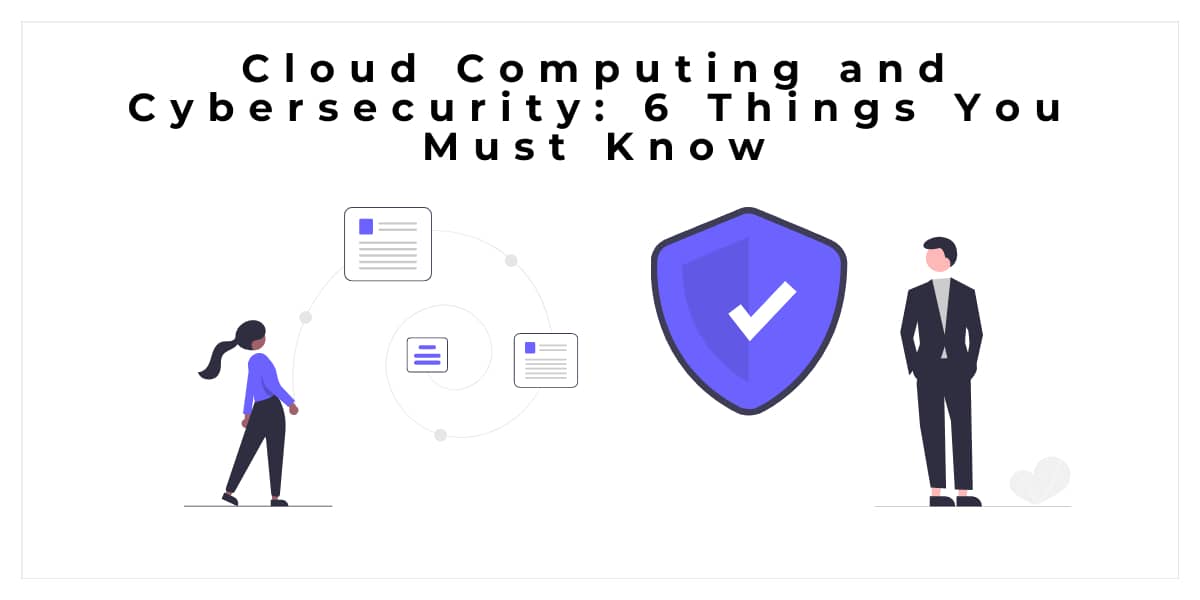Cloud computing is one of the best ways to optimize business. Its cost-effectiveness, flexibility, and scalability potential contribute to cloud infrastructure’s ability to support businesses in various industries.
By migrating business to the cloud, enterprises can better manage their resources and open doors to progressive solutions, automation, and fast-developing tools. Meanwhile, key stakeholders can focus their energy and money on improving business management, expanding to new markets, and improving their products or services.
In the digital era, relying on cloud storage and cloud computing changes how we collaborate across different departments and across the globe. Trusting your business to the cloud infrastructure, however, is only possible if you have strong cybersecurity measures in place.
In this article, we will explore 6 important aspects of cloud computing and cybersecurity that you should have in mind when operating your business. We will delve into endpoint security management, cloud automation, IT staff augmentation, and phishing prevention to shed light on how these areas contribute to a secure cloud environment.
Read on for practical tips on improving your data and system security within the cloud.
#1. Data Encryption and Access Controls

Data encryption and access controls are fundamental for safeguarding sensitive information in the cloud. Hacker attacks can intercept your data, but encryption ensures that data remains unreadable to unauthorized parties.
Strong encryption algorithms are essential for any business that migrates to the cloud—both for data at rest and data in transit. Additionally, improving access control with role-based access control (RBAC) and least privilege principles can help you protect the data from any undesired peakers.
Limiting data access to authorized personnel is the key to keeping your data private. Moreover, by implementing multilevel security, you minimize the chances of unauthorized security and prevent all individuals from declassifying information.
Regular monitoring and audit trails can identify and mitigate potential security breaches and further improve your security within the cloud processes.
#2. Endpoint Security Management
Endpoint security management is a comprehensive solution that combines multiple management technologies into a single platform, providing centralized control and visibility over various endpoints, such as desktops, laptops, smartphones, tablets, wearables, and IoT devices.
It includes the involvement of reliable antivirus software, strong access controls, and intrusion detection systems. Integration of multiple layers of security for all endpoints is essential to protect you from unauthorized access, data breaches, and malware.
As technology develops every day, so do the threats that affect your business in cyberspace. Maintenance and regular updates are crucial for all the security systems you have in place to protect your endpoints and to detect and mitigate all emerging vulnerabilities promptly.
#3. Cloud Automation
For every business that relies on cloud computing, cloud automation is the key to managing all cloud resources effectively. This set of processes and tools helps engineers improve the way they configure and optimize cloud management.
Cloud automation can play a significant role in improving your business's cybersecurity within the cloud. By automating security controls, you can reinforce security policies and reduce the chances of human error.
You can automate repetitive tasks like vulnerability scanning, log analysis, and incident response. Analyzing regular and timely reports allows you to easily detect potential security issues and create adequate responses to strengthen security protocols.
Additionally, automated provisioning and configuration management reduce the risk of misconfigurations, a common cause of data breaches in the cloud.
#4. IT Staff Augmentation

Not all businesses have an in-house IT team with cybersecurity and cloud computing expertise. Outsourcing a team of experts to increase cloud security is an effective solution to set up and maintain security protocols.
IT staff augmentation is a strategy to involve specialists with extensive knowledge and skills to develop and improve cloud security. An outsourced team of IT professionals can help design secure cloud architectures, implement robust security controls, and conduct regular security assessments.
One of the benefits of operating your business within the cloud is that you have the ability to reach expert IT professionals worldwide. Outsourcing a security management team to protect your internal systems is both reliable and cost-effective.
#5. Phishing Prevention

Phishing attacks have been a significant threat to cybersecurity for decades, and they remain a concern in cloud computing environments.
Although phishing methods become more innovative and creative over time, the core concept stays the same. A phishing attack involves deceptive strategies to mislead users to share sensitive information or download malicious software.
Employee training and raising awareness within the internal teams are essential in phishing prevention. Train all employees to recognize standard phishing techniques and encourage them to use strong passwords and update them regularly.
Furthermore, you need to train employees to identify suspicious emails, email addresses, and links. You can build a security wall with email filters, multi-factor authentication, and web filtering tools that can increase their safety online.
#6. Incident Response and Disaster Recovery
No matter how well we prepare for unexpected cyber-attacks, some breaches might still occur. This reality is why it is wise to prepare for incidents and have a plan for recovering from any damage that could occur.
Well-defined incident response and disaster recovery plans are crucial for cloud cybersecurity. Your business should establish a set of protocols that specify how you detect, respond to, and recover from any security violations.
A well-set protocol for dealing with “disasters” involves:
-
Promptly identifying and containing breaches. Timing is crucial for damage control in cloud computing. The sooner you discover and contain the threat, the fewer chances it will have to contaminate your sensitive data and systems.
-
Notifying stakeholders. When a security breach is made on the cloud, transparent communication with the stakeholders is essential. Set up a script to inform them what happened, how it affected them, and what steps you took to recover their investments.
-
Restoring the system to its normal state. Regular backups will help you restore each system quickly and to its latest healthy stage prior to the attack.
Regularly testing incident response plans and backups ensures their effectiveness during critical situations. Collaborating with cloud service providers to establish service-level agreements (SLAs) that address incident response and recovery expectations is also vital.
To Wrap Up
Cloud computing offers immense benefits but also introduces new cybersecurity challenges. As industries migrate to cloud computing and cloud storage, the potential to develop more resilient cyber attacks continuously rises.
Businesses can harness the power of the cloud while mitigating the associated risks by implementing robust security measures, encrypting data, establishing incident response plans, and fostering a culture of cybersecurity awareness.
With continuous monitoring, adaptation, and collaboration, businesses can build a strong cybersecurity foundation in their cloud computing strategies. And remember, when you don’t have the in-house expertise to secure your business online, reach out to eminent experts.








